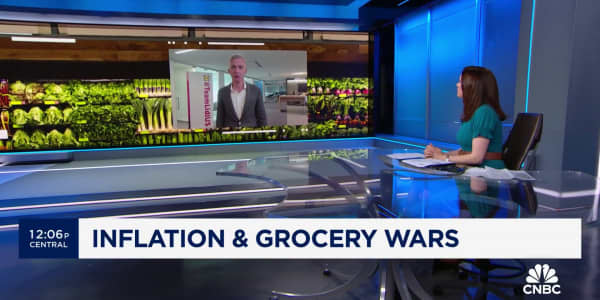When the Barclays Libor scandal broke out it quickly became apparent that the attempts to manipulate key interest rates by Barclays were more than a bit pathetic.
We know that the Barclays traders were trying to manipulate Libor but in ways that were unlikely to work. And in actuality, these attempts don't seem to have been effective, perhaps not ever. The U.K.'s Financial Services Authority brought to light lots of attempts to rig the numbers but no instances of successful rigging.
(Read More: Libor Rates: A Readers Guide)
It details a far more sophisticated manipulation strategy.
If Barclays was like a batter corking his bat, you could say, UBS is the Black Sox scandal.
The entire game was corrupt.
The problem with attempting to rig Libor is that it is difficult for one or even a few banks to successfully do it. For the biggest dollar and euro Libor contracts, 16 banks submit estimates of their own borrowing costs to Thompson Reuters. The highest four figures and lowest four figures are dropped, and the central 8 averaged.
This means that a bank attempting to throw in a low-ball or a high-ball figure would usually fail to manipulate the final number at all, producing no gains for its traders.
The FSA report explains how UBS traders sought to manipulate Libor not just by directly influencing the numbers submitted by various banks but by manipulating the numbers used by banks to determine their honest submissions.
You can imagine a UBS trader reading the Barclays report and thinking: "You rig your own submissions? Ha! I rig the numbers that control your submissions. I am the guy behind the guy behind the guy."
Since Libor submissions aren't based on actual transactions but on estimates of the rate a bank could borrow if it were to borrow, banks honestly attempting to assess this need to take the pulse of the market each day. One quite common method was for banks to rely on reports from brokers about the likely direction of Libor, supposedly based on analysis and "market knowledge."
These reports were known as "run-throughs." Some banks just used these run-throughs to directly determine their own submission.
This herd mentality might seem a bit disturbing and circular but, unless your bank is under particular distress, it isn't really that bad of a way of getting a good Libor number.
Libor isn't meant to differ between banks very much in normal times. So when analysts at other banks say Libor is moving higher, it makes sense for a submitter to figure his own banks borrowing costs would also move higher.
At least one UBS trader figured out that manipulating the run-through would be far more effective than manipulating the final numbers. This would influence everyone's number, not just the people brought in on the conspiracy. The folks tailoring their numbers to the run-throughs would be unwitting participants in the conspiracy.
The run-throughs weren't the only cue banks used to set their Libor rates, of course. Banks would also look to actual cash transactions and bids and offers to figure out where interbank borrowing rates were heading. So the UBS guys reportedly rigged these too.
From the FSA report:
"Trader A also asked certain Brokers to make false bids and offers (referred to as "spoofs") on cash trades in the market in order to skew market perceptions of the rates at which cash could be borrowed or lent in the interbank market. The intention was that the JPY LIBOR submissions of Panel Banks that observed cash market rates when determining their submissions would be skewed. For example, between 7 July 2008 and 29 June 2009, false offers were discussed on the telephone by Trader A with Broker A on at least 12 occasions. In one such conversation on 27 January 2009, Broker A explained that he had been: "... offering...some cheap 3s all morning and 1 shouted them- down at [Panel Bank 3] as well...we were offering them at 50 mate... that wasn't even true".
Enough of this sort of thing and you can totally corrupt a market.
Analyst reports, market price signals, competitor behavior all gets skewed in ways that favor a determined manipulative trader's position.
Libor really does become LIE-bor, a great deception boring its way through the global markets.
UBS agreed to pay a $1.5 billion fine for this behavior. That seems like far too little. Heads should roll, as they did at Barclays. And at least a few people deserve to be locked up.
This is a black mark not just on one bank but on the entire fixed-income business. As Felix Salmon puts it: "if you're a senior fixed-income executive in the investment banking world, you're necessarily suspect. Because this isn't the kind of world where honest men live long."






